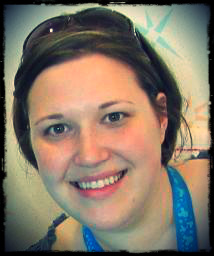Argument-Driven Inquiry in Life Science
By Carole Hayward
Posted on 2015-08-18
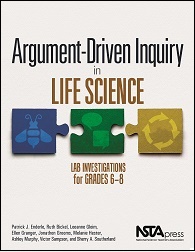 In the new NSTA Press book Argument-Driven Inquiry in Life Science: Lab Investigations for Grades 6-8, 20 lab activities present an innovative approach to lab instruction called argument-driven inquiry (ADI). Use of these labs can help teachers align their instruction with current recommendations for making life science more meaningful for students and more effective for teachers.
In the new NSTA Press book Argument-Driven Inquiry in Life Science: Lab Investigations for Grades 6-8, 20 lab activities present an innovative approach to lab instruction called argument-driven inquiry (ADI). Use of these labs can help teachers align their instruction with current recommendations for making life science more meaningful for students and more effective for teachers.
Authors Patrick Enderle, Ruth Bickel, Leeanne Gleim, Ellen Granger, Jonathon Grooms, Melanie Hester, Ashley Murphy, Victor Sampson, and Sherry Southerland organize the labs around four Life Science core ideas, providing introductory and application labs for each.
- From Molecules to Organisms: Structures and Processes
- Ecosystems: Interactions, Energy, and Dynamics
- Heredity: Inheritance and Variations in Traits
- Biological Evolution: Unity and Diversity
Section 1 of the book begins with two chapters describing the ADI instructional model and the development and components of the ADI lab investigations. Sections 2–5 contain the lab investigations, including notes for the teacher, student handouts, and checkout questions. Section 6 contains four appendixes with connections to the NGSS timeline, proposal options for the investigations, and a form for assessing the investigation reports.
Here are a few examples of the lab investigations:
From Molecules to Organisms: Structures and Processes
Introduction Lab
- Cellular Respiration: Do Plants Use Cellular Respiration to Produce Energy?
Application Lab
- Osmosis: How Does the Concentration of Salt in Water Affect the Rate of Osmosis?
Ecosystems: Interactions, Energy, and Dynamics
Introduction Lab
- Population Growth: What Factors Limit the Size of a Population of Yeast?
Application Lab
- Food Webs and Ecosystems: Which Member of an Ecosystem Would Affect the Food Web the Most if Removed?
Heredity: Inheritance and Variation in Traits
Introduction Lab
- Variation in Traits: How Do Beetle Traits Vary Within and Across Species?
Application Lab
- Mechanisms of Inheritance: How Do Fruit Flies Inherit the Sepia Eye Color Trait?
Biological Evolution: Unity and Diversity
Introduction Lab
- Mechanisms of Evolution: Why Does a Specific Version of a Trait Become More Common in a Population Over Time?
Application Lab
The ADI instructional model focuses on authentic lab activities so that students have more experiences engaging in scientific practices such as asking questions and defining problems, developing and using models, and analyzing and interpreting data. This type of instruction requires that students receive feedback and learn from their mistakes so they can incorporate their new knowledge and experiences into future labs and investigations. The ADI activities presented in this book are thoughtfully constructed to help students learn science in authentic contexts and also to develop the required knowledge, skills, abilities, and habits of mind to do science.
This book is also available as an e-book. To learn more, visit the Argument-Driven Inquiry Series page.
The mission of NSTA is to promote excellence and innovation in science teaching and learning for all.
Follow NSTA
 In the new NSTA Press book Argument-Driven Inquiry in Life Science: Lab Investigations for Grades 6-8, 20 lab activities present an innovative approach to lab instruction called argument-driven in
In the new NSTA Press book Argument-Driven Inquiry in Life Science: Lab Investigations for Grades 6-8, 20 lab activities present an innovative approach to lab instruction called argument-driven in
Chris Lehmann Talks Technology and Teaching Revolutionary Science in the Digital Age
By Lauren Jonas, NSTA Assistant Executive Director
Posted on 2015-08-16
“You stood in front of your community and said, ‘This is the scholar I have become. This is what I can do.’ And in doing so, you reminded all of us of what young people can do when given the freedom and the support to dream big.”
–Chris Lehmann, Graduation Speech to the SLA Class of 2015,
 Chris Lehmann motivates students every day as the founding principal of the Science Leadership Academy in Philadelphia. This November 12-14, he’ll be doing the same for teachers. Lehmann will be a featured speaker at the 2015 Area Conference on Science Education in Philadelphia, Pennsylvania, where he’ll be encouraging science teachers to think in new ways about how they engage students. Don’t miss “Beyond Googling—Building the Conditions for Structured Inquiry,” on Friday, November 13 2:00 PM – 3:00 PM, in the Pennsylvania Convention Center, Ballroom A, when Lehmann will discuss what he sees as the five core values of Inquiry, Research, Collaboration, Presentation, and Reflection, which are at the heart of the inquiry process.
Chris Lehmann motivates students every day as the founding principal of the Science Leadership Academy in Philadelphia. This November 12-14, he’ll be doing the same for teachers. Lehmann will be a featured speaker at the 2015 Area Conference on Science Education in Philadelphia, Pennsylvania, where he’ll be encouraging science teachers to think in new ways about how they engage students. Don’t miss “Beyond Googling—Building the Conditions for Structured Inquiry,” on Friday, November 13 2:00 PM – 3:00 PM, in the Pennsylvania Convention Center, Ballroom A, when Lehmann will discuss what he sees as the five core values of Inquiry, Research, Collaboration, Presentation, and Reflection, which are at the heart of the inquiry process.
What else will you learn about teaching revolutionary science in the digital age? Below is a small sampling of other sessions on this topic:
- Sustainability and Storytelling: iPads in the Outdoors
- ASTE Session: Science and Literacy—The 50-Cent Microscope/Foldscope
- Nature’s Notebook: A Modern Spin on an Age-old Process
- Leveraging Technology to Provide Students with the Autonomy to Differentiate Their Own Learning
- NASA’s “Eyes on the Solar System”: Bringing Planets into Your Classroom
- Technology as a Tool: Increasing Engagement in Science Classrooms
- Teaching Science Completely Online
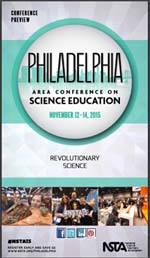 Want more? Check out more sessions and other events with the Philadelphia Session Browser/Personal Scheduler. Follow all our conference tweets using #NSTA15, and if you tweet, please feel free to tag us @NSTA so we see it!
Want more? Check out more sessions and other events with the Philadelphia Session Browser/Personal Scheduler. Follow all our conference tweets using #NSTA15, and if you tweet, please feel free to tag us @NSTA so we see it!
The mission of NSTA is to promote excellence and innovation in science teaching and learning for all.
Future NSTA Conferences
2015 Area Conferences
2016 National Conference
2016 STEM Forum & Expo
Follow NSTA
- Read more about Chris Lehmann Talks Technology and Teaching Revolutionary Science in the Digital Age
“You stood in front of your community and said, ‘This is the scholar I have become. This is what I can do.’ And in doing so, you reminded all of us of what young people can do when given the freedom and the support to dream big.”
How Do Real Science Teachers Prepare for BTS?
By Lauren Jonas, NSTA Assistant Executive Director
Posted on 2015-08-15
Knowing science teachers like I do, I’m not surprised to see that they express a gamut of emotions and have some really innovative ideas about how to prepare for going back to school. A completely unscientific survey of the Twittersphere reveals a few gems that may help science teachers everywhere—or at least bring a smile to a few faces!
ICYMI: Teachers Gear up For #NGSS http://t.co/Z3ztxPrdhZ @TdiShelton #ngsschat
— Melissa Stugart (@MelissaStugart) August 14, 2015
The cats do not understand getting ready for the start of the school year. They have closed my laptop & are revolting.
— Alyson Beecher (@alybee930) August 15, 2015
Released the spider at school by my room. #spider#spiders#Bugs#insects#scienceisawesome#science… https://t.co/kNGLmfKllz
— Adam Taylor (@2footgiraffe) August 14, 2015
Lights, Camera, Learn: What are Engineers? #pictureperfectscience #nsta #studio214 http://t.co/Mf0vAxfJBu
— Andrea Parson (@ParsonAndrea) August 16, 2015
A. Simpson (Keheley) & C. Garvin (Vaughan) at Mickelson ExxonMobil Teachers Academy! #stemcobb #MEMTA2015 pic.twitter.com/RGhuphkQl7
— STEM Cobb (@STEMcobb) July 31, 2015
I need to admit something….. I am an NSTA nerd. 🙂 @NSTA #summer #teacherlife pic.twitter.com/ymGzwdEzao
— Holly Neill (@homelifescience) August 14, 2015
“So it appears that now I’m a chemistry teacher…” Have any advice or tips for this teacher? http://t.co/TehutOhdsB #chemchat #NGSS
— IT’S ABOUT TIME® (@ItsAboutTimeEDU) August 14, 2015
A teensy supermassive black hole on @nytimes Summer of Science series: http://t.co/1YWd6l0THY by @overbye#scichatpic.twitter.com/ulb9BCw27s
— Kim Kowal Arcand (@kimberlykowal) August 15, 2015
Tips for the First Days of School: The August issue of Book Beat is full of them! http://t.co/DlUP27WQU6#NSTApic.twitter.com/AXdGtGuhhd
— NatSciTeachAssoc (@NSTA) August 15, 2015
A #science discussion students will love: What “Inside Out” Got Wrong http://t.co/LUGDMoYm7W#scichat
— Curriculet (@curriculet) August 14, 2015
Set classroom culture with a classroom pledge #TchTogether http://t.co/VTuWLujrGq pic.twitter.com/ZEZqzxE5iS
— Teaching Channel (@TeachingChannel) August 15, 2015
Education-focused media: Come to @NASA_Johnson Sept. 15-16 to learn about #YearInSpace. http://t.co/ZUe7oWusl9 pic.twitter.com/6DgQpHCDfF
— Intl. Space Station (@Space_Station) August 15, 2015
Already registered #NSTA15 Reno! Can’t wait https://t.co/qcuBEwEnE8
— Jen Gutierrez (@jengutierrez18) July 26, 2015
<
p dir="ltr" lang="en">NEW: Teach Climate Change Through Positive Action. #scichat #NSTA #ActOnClimate @naesp #mschat http://t.co/i0YibL0duA pic.twitter.com/aTp1jbheJP
— MiddleWeb (@middleweb) August 16, 2015
The mission of NSTA is to promote excellence and innovation in science teaching and learning for all.
Follow NSTA
Knowing science teachers like I do, I’m not surprised to see that they express a gamut of emotions and have some really innovative ideas about how to prepare for going back to school. A completely unscientific survey of the Twittersphere reveals a few gems that may help science teachers everywhere—or at least bring a smile to a few faces!
Electronic science notebooks
By Mary Bigelow
Posted on 2015-08-12
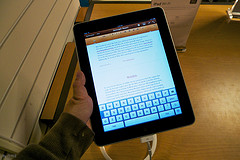 We’re a 1:1 school, and all of my students have access to iPads in class. I’m thinking of transitioning from hard-copy notebooks to electronic notebooks. My students are not thrilled with this. —R., New York
We’re a 1:1 school, and all of my students have access to iPads in class. I’m thinking of transitioning from hard-copy notebooks to electronic notebooks. My students are not thrilled with this. —R., New York
In a previous blog/column, Mary Morgan, a science teacher at Belton High School in Belton, Texas, shared her thoughts on interactive science notebooks. She also has experience with electronic formats, and here she shares her thoughts on electronic notebooking:
I have used INBs (Interactive Notebooks) for the last eight of the nine years I’ve been teaching, for all levels of biology. I’ve toyed with the idea of an electronic interactive notebook, (my school is a 1:1 iPad school), but I just can’t see myself completely transitioning to full iPad interactive notebooks anytime soon.
First, I’ve searched for a program or app that would help students organize the notebook, but I can’t find anything I like. (If I could find something I would certainly give it a pilot run with one of my classes—My pre-AP students are pretty resilient to any pilot programs that might not be successful or have some bumps along the way.)
For example, Google docs and LiveBinders are great, but don’t give the organized notebook “feel.” By notebook “feel” I mean that I like the students to be able to see their notes while they are doing the processing piece on the right side. When they are studying they can have multiple documents “open” in the notebook at the same time (using the flip-ups and right/left side model) which cannot yet be achieved on the iPad. (If we had laptops, I might be more inclined, but I haven’t found anything yet for the iPad. I’m open to suggestions!)
Also, I’ve done some straw-polls with my students (no official, scientific research other than papers I’ve read from others on the topic) and the vast majority of them (usually about 98-99% each year) do not like putting their notes on their iPads. When I go further with the questioning, those who have tried taking notes on the iPad say they never go back and study them because they are hard to find, and they’re distracted by the games and apps that are readily available.
I did allow students to do their notes on their iPads last year if they wanted (they could choose the app -— Goodnotes, Evernote, Notepad, uPad, etc.), but still had to do Cornell style. They come from fully restricted iPads at middle school to unrestricted at high school, so they get really excited about them when they first have them in September. Many started off doing them on the iPad, but by the end of the year had transitioned back to the paper notebook. I think they liked the novelty of the notes on iPad, but they soon realized they were more apt to study the notes and they were easier to access and use for activities/labs/processing when they did them on paper.
Also, I ran into students who weren’t actually copying or writing notes, but instead they were taking photos of presentation slides. This is absolutely not helpful! They never looked back at them and couldn’t find what they needed among the 1000’s of photos. This was a huge issue for both studying and copyright.
My experience is, while copying notes is certainly not the best way to learn (I always have a processing piece to go with the notes so they are forced to wrestle with the information), there is something to the writing part that helps the information start to stick in the brain, at least in the short term memory. However, taking a photo of the notes doesn’t even start the memory firing at all, so this is just rubbish. I allow students to take photos of instructions for lab directions but not their notes. Plus, I post all of our notes on Homeroom, so they have access to the videos/animations/pictures/links/info outside of class.
This year, I did not allow notes on the iPads, unless they first took them in the INB and then copied them to the iPad, which became a good study tool for some. (It was the same as copying paper notes to paper, but with the tech aspect making it more exciting, I guess.)
This is not to say that I do not incorporate the iPad into the INB experience. We use iPads quite often in my classroom. We use online videos (I’ve even created a few of my own!), do web quests, play science learning apps, play study games, take quizzes on Socrative, complete and submit assignments on Homeroom, and create products like videos and infographics on the iPad for various projects. In addition, students look up answers to questions they have and access their textbooks through their iPads. I took a number of classes this summer on App Smashing and Augmented Reality, so I am very excited to begin incorporating these techniques into my classroom this year as well! For my students and I, technology opens up the learning field and creates a wider world in which to study science. For example, instead of simply describing what Darwin found in the Galapagos Islands, we can use Google Earth and actually visit the islands! Or, we can visit virtual museum exhibits to determine how the body systems interact or see the macromolecules in action inside of an organism! In my classroom, the iPads and notebooks are used side-by-side and it seems to work out quite well for the students.
Note:
- Adding to the discussion of notebooks in 1:1 classrooms is a recent article “The Pen Is Mightier Than the Keyboard: Advantages of Longhand Over Laptop Note Taking,” summarized here.
- A university professor and a professional scientist share their thoughts in the blog Notebooks as “Dinosaurs”
Photo: https://www.flickr.com/photos/fhke/4509556824/sizes/l
Where are you reading Science and Children this summer?
By Peggy Ashbrook
Posted on 2015-08-11
 A family trip took me to a new and breathtaking location—Glacier National Park. We went before the Reynolds Creek Wildland fire started but evidence of past burns and avalanches was dramatic. The trip also provided the moments I needed away from daily chores to thoroughly read the July issue of Science and Children. Where have you been reading Science and Children this summer?
A family trip took me to a new and breathtaking location—Glacier National Park. We went before the Reynolds Creek Wildland fire started but evidence of past burns and avalanches was dramatic. The trip also provided the moments I needed away from daily chores to thoroughly read the July issue of Science and Children. Where have you been reading Science and Children this summer?
Send me a picture of your copy of Science and Children (and you, if you’d like) in your favorite summer location—a beach, your backyard, the neighbor’s pool, a fab museum or on lunch break at your summer job, and I’ll add them to this post. Send your picture of Science and Children to theearlyyearsnsta at gmail dot com.
Send me a picture of your copy of Science and Children (with you, if you’d like to be part of the picture) in your favorite summer location—a beach, your backyard, the neighbor’s pool, a fab museum or on lunch break at your summer job, and I’ll add them to this post.
Here’s a bit about just a few of the many interesting articles in the summer issue:
In “Dig Into Fossils!”, an article free to all, Lisa Borgerding writes about the “big ideas” she introduces to preschool and kindergarten students in a science-focused camp:
- Fossils are the remains of organisms that used to be alive a long time ago.
- We make inferences about fossil organisms’ form, function, and habitats based on observations.
- Fossils can be similar to organisms alive today.
Jyoti Gopal writes about her kindergarten class’s investigation into the taste, color and origin of foods as they tasted their way through the alphabet, in “Eating the Alphabet: Using a daily morning routine to link science, math, literacy, and social studies in a kindergarten classroom” (pgs 50-58). Have you ever tasted a tamarind, tzatziki or turnip?
Editor Linda Froschauer gives tips on how to accomplish an instructional sequence that supports a valid learning progression and can be followed by our learning community in her Editor’s Note: Identifying a Progression of Learning.
If you’d rather read it on your digital device, see the choices here.
Happy reading!
 A family trip took me to a new and breathtaking location—Glacier National Park.
A family trip took me to a new and breathtaking location—Glacier National Park.
SXSWedu 2016: Vote for NSTA’s Session Idea, The Next Generation of Science Teachers
By Guest Blogger
Posted on 2015-08-10
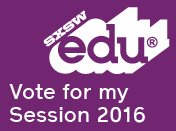 Voting opens today for SXSWedu session proposals for the conference’s 2016 program, and NSTA needs your vote! To be selected for inclusion at SXSWedu, proposals must pass an extremely competitive crowd-sourced PanelPicker process.
Voting opens today for SXSWedu session proposals for the conference’s 2016 program, and NSTA needs your vote! To be selected for inclusion at SXSWedu, proposals must pass an extremely competitive crowd-sourced PanelPicker process.
The 2016 event marks the sixth anniversary of this highly interactive conference, which converges education’s most energetic and innovative leaders from all backgrounds of the teaching and learning landscape—including teachers, administrators, professors, and business and policy stakeholders—to discuss a number of key topics in education. We want to represent science teachers at the event and, to talk about the role that the next generation of science teachers will play in this fast-changing world.
What can you do to help? Please vote for our session proposal. Why does it work this way? SXSWedu crowd sources sessions to be sure the public has a chance to weigh in on the topics they’d most like to see covered. Public voting, in addition to the comments from the SXSWedu Advisory Board and staff, help to form the 2016 event.
Please help give science educators a voice in the discussion at SXSWedu by casting a vote for NSTA’s session, The Next Generation of Science Teachers. Public voting opens today, August 10, and closes September 4, so check out our session proposal now and cast your vote!
 Carolyn Hayes is the NSTA President, 2015-2016; follow her on Twitter at caahayes.
Carolyn Hayes is the NSTA President, 2015-2016; follow her on Twitter at caahayes.
The mission of NSTA is to promote excellence and innovation in science teaching and learning for all.
Follow NSTA
 Voting opens today for SXSWedu session proposals for the conference’s 2016 program, and NSTA needs your vote! To be selected for inclusion at SXSWedu, proposals must pass an extremely competitive crowd-sourced PanelPicker process.
Voting opens today for SXSWedu session proposals for the conference’s 2016 program, and NSTA needs your vote! To be selected for inclusion at SXSWedu, proposals must pass an extremely competitive crowd-sourced PanelPicker process.



